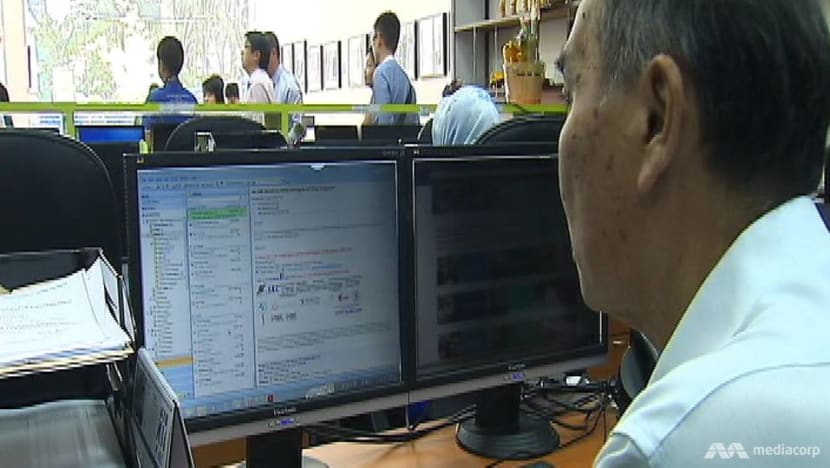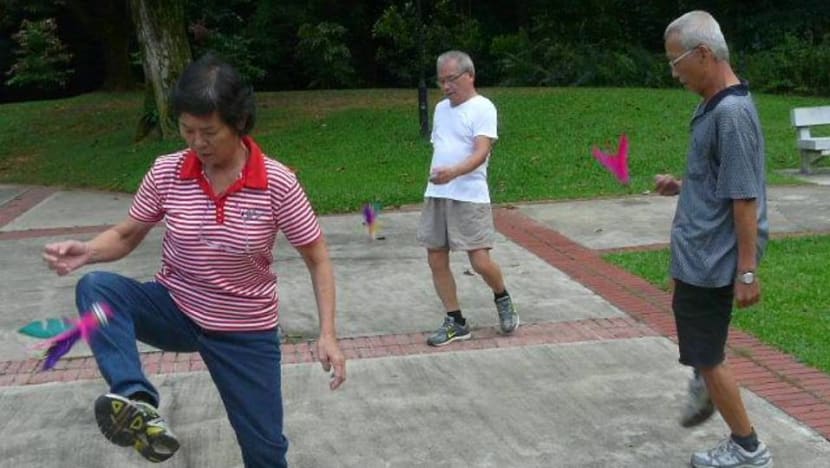commentary Commentary
Commentary: Yes, you can peak in your career in your sixties
But doing so may require not only self-awareness but also recognition from employers that seniors have strengths they can tap on, says Grant Thornton’s David Sandison.

File photo of an older office employee.
SINGAPORE: Everywhere around us, there are people who hit their “peak” late in life.
Charles Darwin was 50 before he published On the Origin of the Species in 1859. Colonel Sanders was 65 when he founded Kentucky Fried Chicken.
Bernhard Langer, now 63, is still winning professional golf tournaments with 11 senior major championships under his belt.
But peaking is perhaps not quite the right word, as it suggests an inevitable decline. Some people seem to go on forever.
This is probably best summed up by the irrepressible George Burns, the American comedian who, on reaching his 100th birthday was quoted as saying:
If I had known I was going to live this long, I would have taken better care of myself.
READ: Commentary: Companies and workers, forget life before COVID-19. Budget 2021 will help us prepare for life after it
READ: Commentary: Singapore’s bold bet on seniors and valuable years of life experience
GOOD NEWS FOR AN AGEING WORLD
This should offer encouragement as the world’s population grows older at a faster rate than at any other period in our history.
Singapore is no exception. The life expectancy of females has increased from 63 in 1955 to 86.2 today.
Males have seen a corresponding increase from 57.5 to 82.1. The age dependency ratio is around 22 per cent.

This ratio is set to increase going forward, with a fertility rate of 1.14 well below replacement rates. By 2030, one in four Singaporeans will be 65 or older.
LOOKING OUT FOR OLDER WORKERS
In the wake of the pandemic, unemployment ticked up in Singapore, with overall unemployment up from 2.3 per cent in 2019 to 3 per cent in 2020.
And as firms pivot to cope with fresh challenges and adopt new technologies, workers of all ages should expect big changes to how they work.
As a matter of fact, Grant Thornton’s recent survey, the International Business Report 2020, revealed that restructuring the workforce was the main business priority for 2021 for 46 per cent of respondents in Singapore.
READ: Commentary: It is high time for a Ministry on Ageing Issues
Around the world however, empirically, not only are middle-aged and older workers more likely to suffer job loss. It is also this group that will find it harder than their younger counterparts to secure a new one.
Age discrimination in the workplace is illegal as per Singapore’s employment law. Yet it seems to be a widely accepted notion that older workers are not as productive, as technologically savvy or as agile as their younger counterparts.
People also seem to believe, for some reason, that they are more expensive to hire. This somewhat unfounded view of “ageism” has got to go.
READ: Commentary: Watch for casual ageism and other signs of caustic attitudes about older workers
DEBUNKING THE MYTH
Singapore’s macro trends show the contrary. Today, six out of 10 workers in Singapore are 40 or older.

However, over the past decade, Singapore’s productivity has increased by a significant 30 per cent. Instead of hindering the nation’s growth in automation and digitalisation, this older population has arguably done the opposite and helped propel its success.
Part of this may have arisen with the nation’s push for digitalisation, complemented by reskilling initiatives that keep all workers, old and young, current.
But older workers have natural strengths employers should appreciate. A recent study by the American Association of Retired Persons on the global workforce, confirms older workers tend to be more productive, mature, engaged and have lower rates of turnover and absenteeism than younger workers.
READ: Commentary: Encourage seniors in digitalisation drive instead of forcing tech adoption on them
A more mature workforce brings the incomparable advantage of years of experience, subject matter expertise, and problem-solving capabilities.
It is also likely to display greater levels of professionalism, have an established network to tap into while shunning disruptive “job-hopping”.
Several years ago, a head-hunter friend said that if he had his way, he wouldn’t hire anyone under 50, largely for these reasons. I agreed with him at the time, but also agreed to keep this view our secret.
But the other advantage older workers bring is the ability to guide and mentor younger staff and give them that “leg-up” that only learning the hard way could otherwise have achieved.
READ: Commentary: Seniors do well at their jobs yet ageist myths and negative stereotypes persist
DON’T RETIRE IN YOUR 50s
When I first arrived in Singapore in 1991, I was taken aback to see the retirement age of partners in our (then) Big Five firm was 55. This seemed like a rather short runway to retirement.

Coming from the United Kingdom, as I had, where male retirement age was 65, it struck me that 55 was when you should be getting the engines started. It was just not wise on the part of firms to disregard all that talent and experience.
When I reached that tender age myself, retirement cut-off had slid out to a more respectable (but still incredibly young) 58.
Rather than lie on a beach until I met my maker, I felt I needed to do something to keep the grey matter on tip-top form.
I ran my own successful and enjoyable tax consultancy practice for more than five years and eventually joined Grant Thornton at 64, thanks to the firm’s unusual, visionary “no retirement age” policy. It was a V-shaped recovery, you could say.
READ: Commentary: If more work in old age, how relevant is the retirement age?
Those of us in the tax and accounting profession are quite fortunate. Our work is largely cerebral. This has a three-fold benefit.
By spending the day problem solving, I get paid, the old brain gets a good bit of exercise and I can always remember where I left my keys.
Those in other roles may not be so lucky. Clearly, the more you move to jobs requiring less brainpower and more manual labour, the more you could see a deterioration in performance as age creeps up.
However, this need not be an insurmountable problem, with appropriate thought and perhaps re-assignment and the redesign of roles to tap on the edge older workers do have: Experience and wisdom.
READ: Commentary: Navigating the new road to modern elderhood
MISSING OUT A BIG ADVANTAGE
While the Government’s plan to bring forward the extension of the retirement age and its subsidies for enhancing support for older workers to be re-employed via the Senior Worker Adopter Grant and the Part Time Re-employment Grant is welcome, a lot still needs to be done to battle the “ageist mentality” in society and to give the older population their due.

I remember a number of years ago, B&Q, the DIY home retailer in the UK, did away with the concept of retirement age and has been operating successfully like this for over 20 years.
It started with an experiment in one of its stores which only employed people above 50 (an unacceptable form of reverse ageism today I’m sure).
They found that profits were 18 per cent higher than other outlets, staff turnover six times lower, a 39 per cent lower than usual absenteeism and 58 per cent less “shrinkage” i.e., pilfering.
A 2006 Harvard Business Review study by human capital luminaries Josh Bersin and Tomas Chamorro-Premuzic shows that knowledge and expertise – the main predictors of job performance – keep increasing even beyond the age of 80.
READ: Commentary: Older workers vulnerable to rising tide of retrenchment as ageist mindsets persist
In this, ageist businesses are missing out on a big advantage. A well-balanced and complementary workforce of young and old will beat the market every time.
A vast majority of human advancements can be attributed to teamwork and research proves that the best way to maximise team output is to increase cognitive diversity, which is significantly more likely to occur with people of different ages working together.
At 65 now, I am still learning new things every day, and hopefully, teaching a thing or two in return.
Peaking? The engines are just starting.
LISTEN: A labour MP, a business community leader and an economist break down the shifts underway in Singapore's Budget 2021 on CNA's Heart of the Matter podcast:
David Sandison is Singapore Practice Leader & Head of Taxation at Grant Thornton Singapore.















